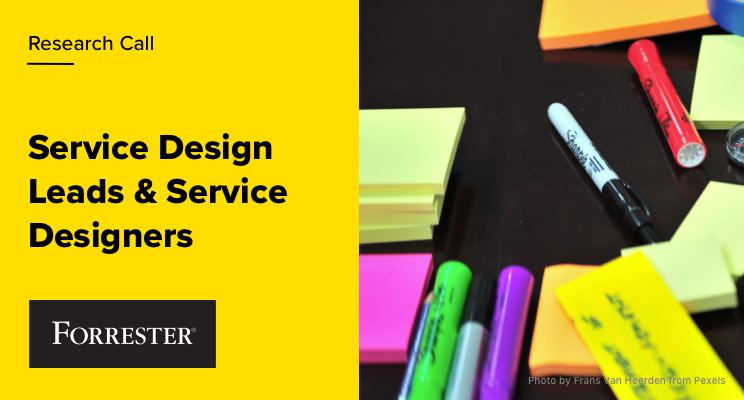Service Design ROI And Operating Model
The service design framework relies on five simple principles. Those principles guide practitioners along the service design process. But it is common to see teams applying the principles and following a service design process without necessarily labeling their practice as service design.
More Design Teams Are Using Service Blueprints
Service blueprints, a service design tool that could be compared to a very detailed journey map, are often a visible proof of a service design practice. They map both visible and invisible parts of an experience and cover multiple touchpoints and tangible elements, as well as internal processes and systems that sustain the experience. And according to Forrester’s Q4 2020 Global State Of Design Teams Survey, they are gaining popularity: 46% of respondents said they used service blueprints in 2020 — a 12% increase compared to 2019.
What Should Be The Service Design Operating Model?
As service designers join customer experience teams and bring along the service design principles, processes, and tools, organizations often struggle to find the right operating model for their work. Should they act as a centralized resource that can facilitate other teams’ work? Should they collaborate with user experience researchers on strategic orientations? Do they complement business analysts? Should they be embedded into product teams? Companies with a higher design maturity struggle less with finding the right fit for service design. But there is still a lot to discover on how service design teams operate within organizations.
How To Measure Service Design ROI
Firms overlook a lot of outcomes when evaluating the ROI of service design. As service design grasps the complexity of an entire service ecosystem, it delivers value in areas such as customer experience, employee experience, and operational efficiency for existing services. It can also lead to entirely new business models. In practice, it is common for teams to discover a multitude of different opportunities they could pursue … but to move forward with only one for implementation due to lack of budget, time, or buy-in. In ROI calculations, only implementations make the equation, but what about the organizational value that co-creation, one of the service design principles, generates? And what about the leftover opportunities?
Help Our Service Design Research
 Are you leading service design in your organization? I’d love to hear about your experience, particularly in terms of how you are using service blueprints (complementing or replacing journey maps), how you are operating within your organization, and how you are evaluating your impact.
Are you leading service design in your organization? I’d love to hear about your experience, particularly in terms of how you are using service blueprints (complementing or replacing journey maps), how you are operating within your organization, and how you are evaluating your impact.
We are starting to schedule 30-minutes interviews. If you’d like to participate, you can use our scheduling tool here.
